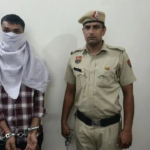
On April 12, 2025, the Karnataka government shared a report in the state assembly. This report is called the Socio-Economic and Educational Survey (SES), and the data was collected back in 2015.
According to the report, the number of Muslims living in Karnataka has gone up. In 2011, Muslims made up 12.92% of the state’s population. But by 2015, that number had increased to 18.08%. This means the Muslim population grew by 5.16 percentage points in just four years.
This big rise in such a short time has started many discussions, especially about politics and reservations (special benefits given to certain communities in jobs and education). The new numbers could lead to changes in how these benefits are given and how political parties plan for elections.
Muslims dominate the OBC group, pushing for higher reservation
The SES report says that Muslims are the biggest group among the Other Backward Classes (OBCs) in Karnataka. There are about 75.25 lakh (7.5 million) Muslim OBCs in the state. These Muslims are placed under Category 2B in Karnataka’s OBC list.
Because of their large population, the Commission that made the report has suggested giving more reservation (special seats in jobs and education) to Muslims. Right now, Muslims get 4% reservation, but the Commission wants to increase it to 8%. The Commission has also said that the total reservation for all OBCs should go up from 32% to 51%, since OBCs make up a large part of the state’s population.
This proposal is based on the fact that OBCs make up 69.60% of the state’s total population. The Commission has justified the suggestion by arguing that the current reservation system does not reflect today’s demographic reality. The Indra Sawhney judgement, which limits reservations to 50%, is considered “not operational” by the Commission, especially in light of other states like Jharkhand and Tamil Nadu, which have surpassed this limit. In these states, reservations currently stand at 77% and 69%, respectively.
Urban shift and demographic changes in the Muslim population
One important point from the SES report is that many Muslims in Karnataka now live in cities. Out of the total 75.25 lakh (7.5 million) Muslims in the state, around 44.63 lakh live in urban areas, while only 32.36 lakh live in villages or rural areas.
This shows that more Muslims are moving to cities. Because of this, they may start having more influence in city life, politics, and local decisions. This shift could bring changes in how things work socially and politically in Karnataka’s cities.
The 2011 Census reported the Muslim population in Karnataka at 78.93 lakh, or 12.92% of the total population. However, the 2015 SES data shows a significant rise in the percentage, reflecting both population growth and increased visibility. The SES also indicates that Muslims have outpaced several traditionally dominant castes in terms of growth and representation in the state.
An important factor contributing to the debate is how the Muslim population was counted. While many Hindu communities were registered under sub-castes during the census, the Muslim population were not split into sects or schools. This has resulted in Muslims appearing as a homogenous group with greater numerical weight, which has added fuel to the ongoing discussions about their representation.
Some reports suggest that if the Muslim population were to be seen as a single community, it would surpass the Vokkaligas and Lingayats in numbers. This has led to questions about how such a large and growing community should be classified and represented in the state’s political and reservation policies.
Cabinet meeting to decide on implementation of recommendations
On April 17, 2025, the Karnataka government will hold an important meeting. This meeting will be led by Chief Minister Siddaramaiah. The main topic of the meeting will be to decide which suggestions from the SES report can actually be put into action.
What they decide in this meeting could play a big role in shaping how political parties talk about and treat backward classes in the state, especially since elections are coming soon. The decisions may affect things like reservation policies and how different communities are represented.
National trend: decline in Hindu share, rise in Muslim share
A recent study titled “Share of Religious Minorities – A Cross-Country Analysis (1950-2015)” released in May 2024 also reflects a similar trend. According to the report, the Hindu share of the Indian population declined by 7.8% between 1950 and 2015, while the Muslim share grew by 43.15%. The percentage of Hindus in India’s population dropped from 84% in 1950 to 78% in 2015, whereas the Muslim population increased from 9.84% to 14.09% during the same period.
You might also be interested in: No muslim lost citizenship; Congress misled people on CAA: Amit Shah



